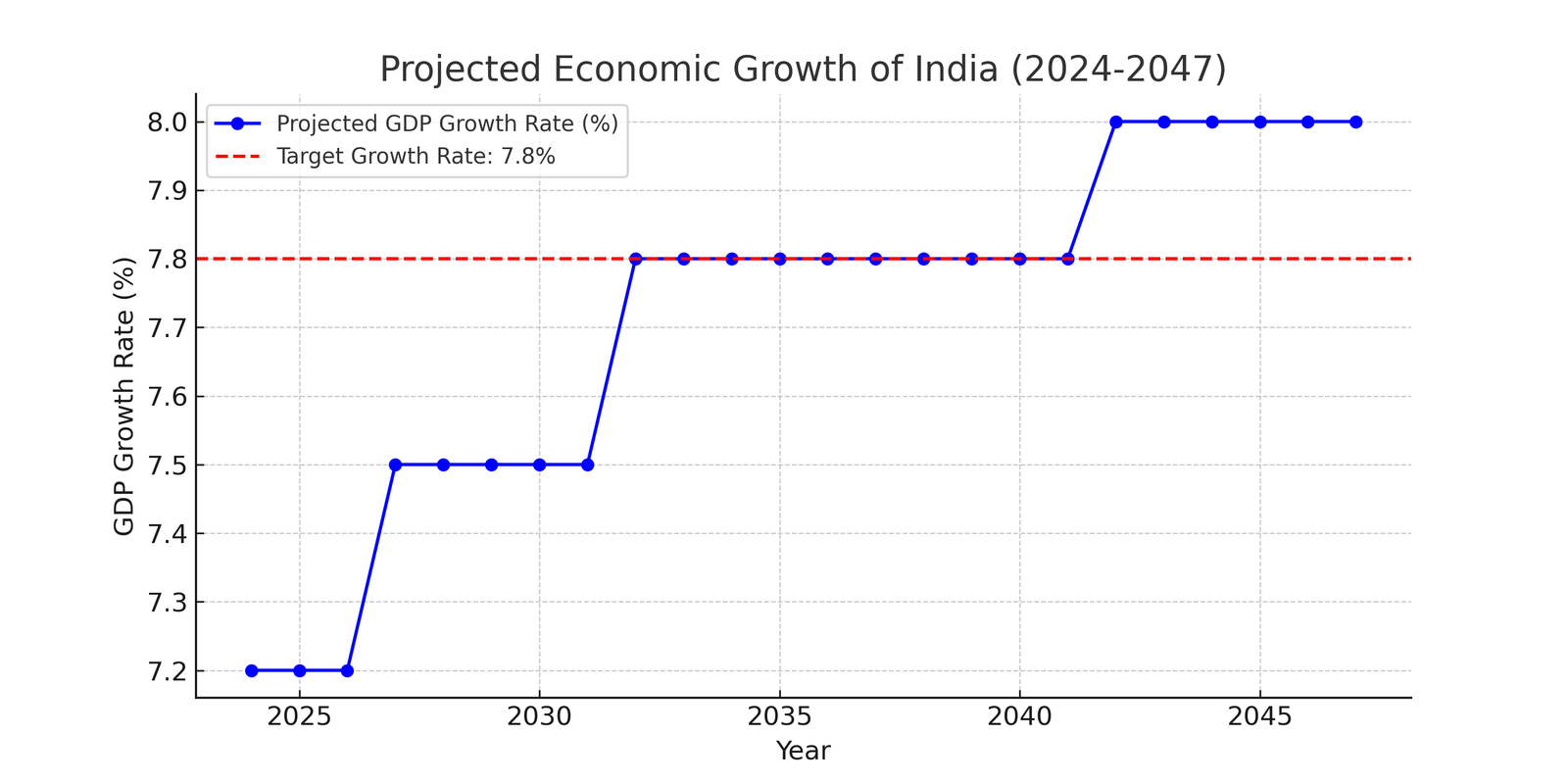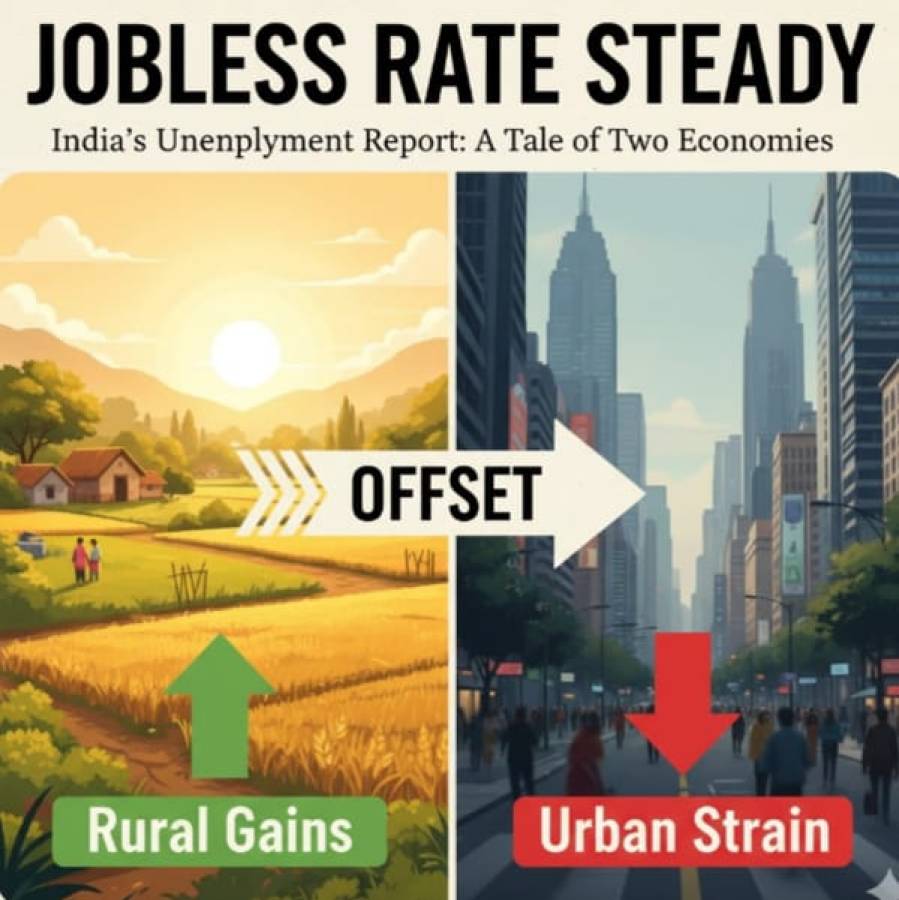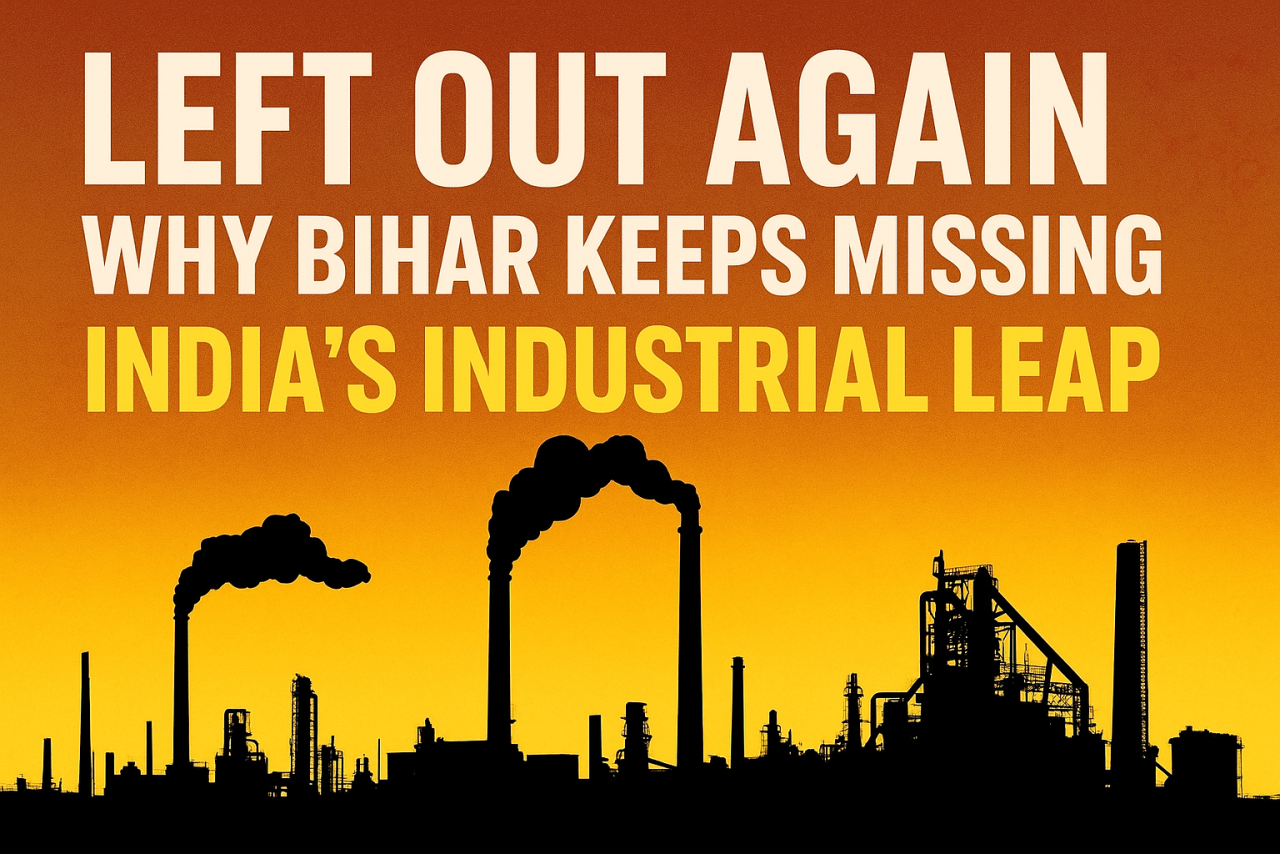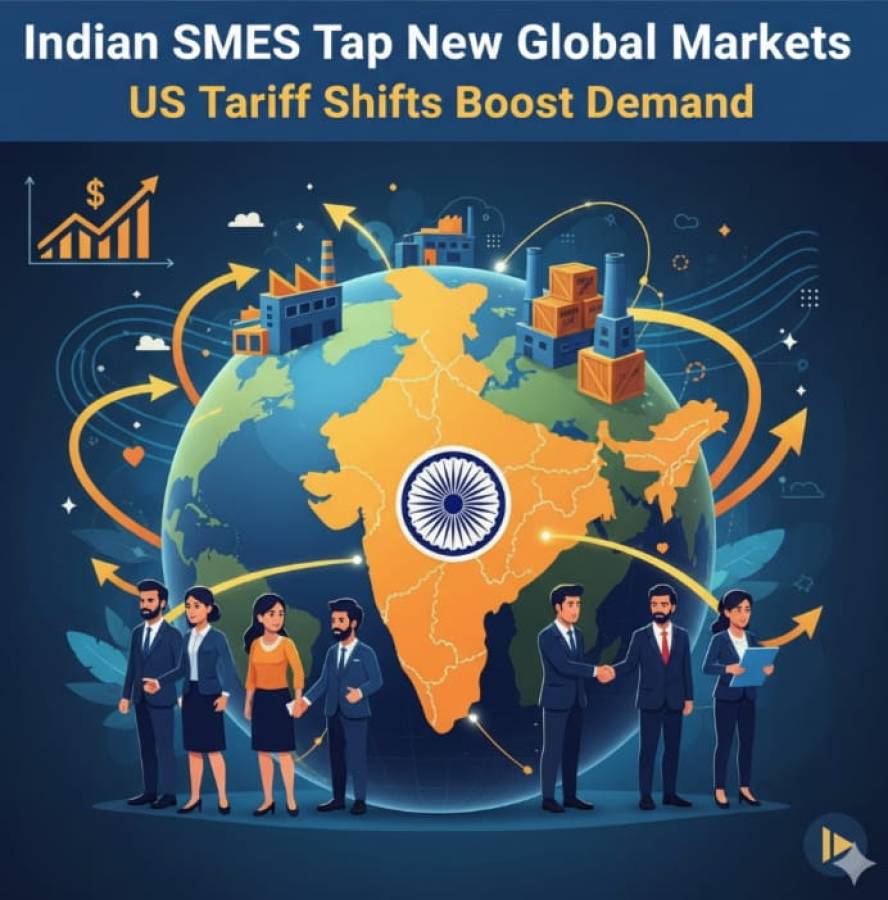
For years, India has been celebrated as the world's fastest-growing major economy. But economic growth alone isn’t enough. The real question is: Can this growth be sustained at an ambitious 7.8% annually for the next two decades? According to a recent World Bank report, this is the magic number India must achieve to transition into a high-income country by 2047, just in time for its centenary as an independent nation. But is this an achievable goal, or is it just another lofty aspiration in a country where economic progress often collides with ground realities?
The Economic Landscape: Ambition Meets Reality
At present, India’s per capita gross national income (GNI) stands at $2,540. To enter the high-income club—defined by a per capita GNI of $14,000—India must grow nearly eight times over the next two decades. Few nations have accomplished such a feat, and those that have—like China and South Korea—relied on an aggressive mix of reforms, infrastructure development, and an export-led economy. India, with its complex democracy, fragmented federalism, and social challenges, faces a unique set of roadblocks.
The government, under Narendra Modi, has already set the “Viksit Bharat” (Developed India) goal for 2047. The World Bank, while acknowledging India's macroeconomic stability and demographic dividend, is clear: business-as-usual won’t cut it. The country will need bold reforms, heavy investments, and an overhaul of its labor and productivity landscape.
The Key to 7.8% Growth: A Four-Pillar Strategy
To reach this ambitious target, the World Bank identifies four crucial areas where India must act decisively. The first is productivity. India must unlock its agricultural sector’s potential, expand digital and physical infrastructure, and integrate itself deeper into global trade networks. Despite rapid urbanization, a large portion of India’s workforce is still engaged in agriculture, a sector that contributes just 18% to GDP. Shifting labor from farms to manufacturing and services is crucial for sustained economic acceleration.
The second pillar is investment. The report suggests that investment must reach 40% of GDP by 2035, a number that will require not only domestic capital but also increased foreign direct investment (FDI). India has made strides in attracting global investors, but regulatory bottlenecks, land acquisition hurdles, and bureaucratic delays remain a concern.
The third pillar is jobs. India’s labor market needs a revolution, particularly in boosting female workforce participation. The female labor force participation rate (FLFPR) is currently abysmal, hovering around 25%. For comparison, China and Indonesia stand at over 50%. If India can increase this number to 55% by 2050, as the World Bank suggests, it could unlock a significant growth potential.
Finally, economic convergence across states is key. India is not one economy but a collection of several, with highly developed states like Maharashtra and Karnataka at one end and lagging states like Bihar and Uttar Pradesh at the other. Narrowing this gap is critical. Unless all states grow at a steady pace, national growth will remain patchy and inconsistent.
The Lessons of the Past: A Guide to the Future
India has already shown that rapid economic acceleration is possible. Over the past three years, India’s average GDP growth has been 7.2%, a promising sign. However, past growth phases have often been punctuated by slowdowns, triggered by factors like oil price shocks, financial crises, or domestic policy missteps.
In the 1990s, economic liberalization under P.V. Narasimha Rao and Manmohan Singh transformed India’s economy, leading to a boom in services and technology. In the 2000s, reforms in telecom, aviation, and infrastructure fueled another growth phase. But post-2010, regulatory hurdles, policy inconsistencies, and external economic challenges slowed the momentum.
The Modi government has pushed several reform initiatives—from GST to the Insolvency and Bankruptcy Code to Digital India—but large-scale structural changes are still needed. Labor reforms, land acquisition laws, and financial sector overhauls remain unfinished business.
Can India Achieve the 2047 Dream?
The path to high-income status is not linear. Even China, which has averaged over 9% growth for decades, is now struggling with an aging population and slowing productivity. India’s advantage is its young workforce and growing consumer market. However, these advantages can turn into liabilities if not harnessed properly. A large, unskilled workforce can lead to economic stagnation rather than growth.
The World Bank’s recommendation is clear: India must embrace an “accelerated reforms” approach. This means doubling down on infrastructure, creating a business-friendly regulatory environment, and aggressively integrating with global markets. It means incentivizing private sector participation, fixing educational gaps, and focusing on technology-driven productivity. It means fostering an inclusive growth model where every citizen, irrespective of gender or geography, can contribute to and benefit from economic progress.
While the target of 7.8% growth may seem ambitious, India has already demonstrated resilience and adaptability in its economic journey. If it can learn from its past successes and failures, and if policymakers display the political will for deep, transformative reforms, the dream of a high-income India by 2047 may not be so far-fetched after all.





















